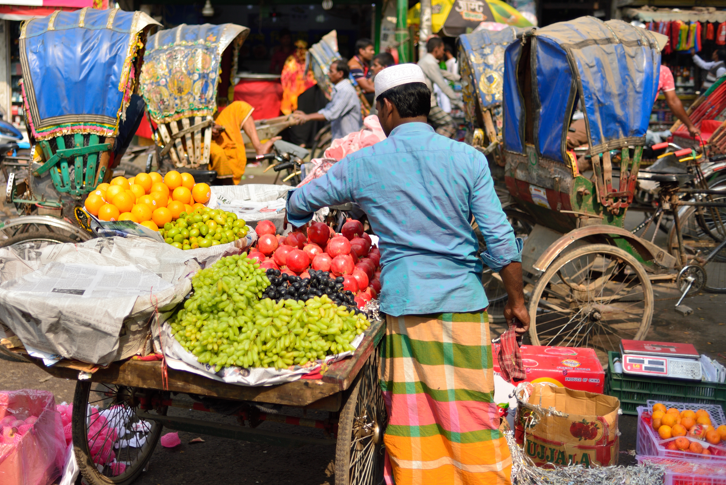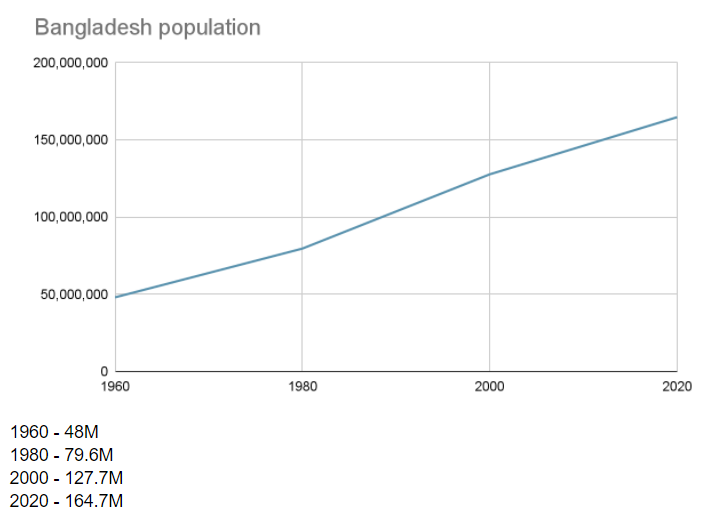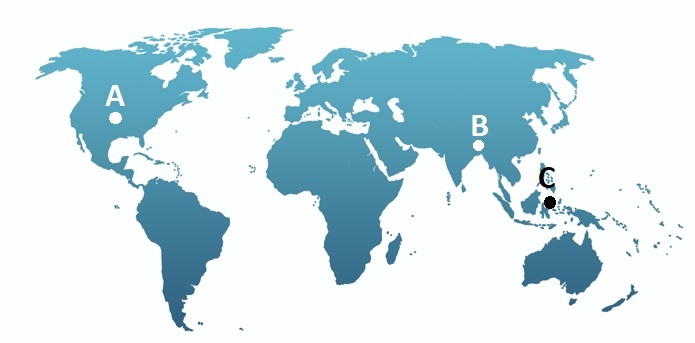
“Zero Hunger” is the topic of this unit.
■ Get to know and share your thoughts on the countries in hunger.
■ Deepen your knowledge of hunger by reading passages







| What are the top causes of poverty? |
| The causes of poverty are____________, ____________, and ____________. |




In the next part, we are going to learn about “Zero Hunger”.

| 1. | Where is Bangladesh? A, B or C? |
| The answer is _________. |



| 2. | What can you see in the pictures? Please describe as many as you can from each picture. |
 |
 |
| Answer: |






|
hunger 飢餓
Hunger is the main problem in this country.
|

|
agriculture 農業
Agriculture is the village’s main source of income.
|

|
famine 食糧不足、飢饉
Many people die of famine every year.
|

|
crisis 危機、難局
They haven’t recovered from the water crisis.
|



| 1. | Malnutrition is caused by ___________. |
| 2. | _______________ is an important industry in the country. |
| 3. | Underdeveloped countries still experience _______________. |
| 4. | We must work together to avoid a water ___________. |




Then, let’s move on to the next part.

In 2019, 47 million children under the age of five were affected by wasting or acute undernutrition. These conditions make children too thin and weak. They increase the risk of dying, poor growth, development, and learning.
Food and humanitarian aid must be needed in the most vulnerable areas as soon as possible. To avoid a hunger crisis, agricultural productivity and long-term food production must be increased.



| 1. | According to the World Food Program, how many people are chronically malnourished? |
| Answer: |


| 2. | What must be increased to help lessen the dangers of hunger? |
| Answer: |



Estimates show that Bangladesh will run out of agricultural land by 2080 if the current trend continues. Every year, the country loses approximately 80 thousand hectares of cultivable land due to various activities for people’s lives. This will have an impact on its food production.
Additionally, Bangladesh’s agriculture system is still outdated and unscientific. It also prevents their food production.
In Bangladesh, population growth is the primary cause of famine.



| 1. | What is the main cause of famine in Bangladesh? |
| Answer: |


| 2. | How many hectares of cultivable land does Bangladesh lose per year? |
| Answer: |




If you have any questions, please ask me.


| 1. | In your country, have you ever been so hungry? What would you do when you felt hungry? |
| Answer: |


| 2. | In Japan nowadays, “food waste” is one of the country’s problems. People throw away food that can still be eaten. What can you do to reduce food waste? |
| Answer: |



